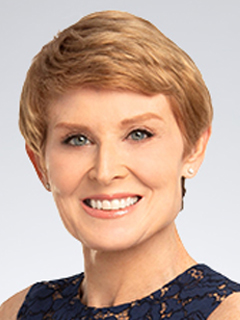Labor market chill worsens
Churn in the labor market has come near to a standstill.

September 5, 2025
Payroll employment rose by 22,000 in August, a further cooling from an upwardly revised 79,000 in July. The two-month revision shaved another 21,000 from overall payrolls this year; June now shows a decline of 14,000. That is in addition to the 258,000 downward revision we saw last month and marks the first decline since the height of the Delta wave for COVID in December 2020.
The three-month moving average of job creation was 29,000, down from 122,000 over the last 12 months. That is well within the statistical margin of error for zero, although the household survey showed significantly more job gains. The households survey picks up the self employed and gig workers.
Today’s data is consistent with other public and private sector job releases, which reveals a cooling labor market and tracks with the consumer attitude surveys, which highlighted a chill in the labor market in July and August. The data from ADP and Revelio Labs earlier in the week underlined the same slowdown in hiring.
Churn in the labor market has come near to a standstill, with the pace of hiring, quits and layoffs all extremely low. Those who have a job are essentially frozen in place, while those without are frozen out. Job losses in sectors with a higher percentage of remote work have been greater than those without, which suggests that employers are regaining an advantage over workers as remote work is considered a perk. People are even willing to work for less when they work remotely or in hybrid work situations.
Government sheds jobs
Public sector employment continued to contract, with a loss of 16,000. Federal employment dropped by 15,000, bringing total federal job losses for the year to 94,000. Most of the federal job losses reflect retirements amid a hiring freeze.
We will hit a cliff in October, when 151,000 federal workers who took buyouts will come off the payrolls. Those losses could be mitigated by a hiring spree at the Department of Homeland Security, which is ramping up employment. (It received more than 100,000 applications in August after offering signing bonuses and hefty salaries.)
State and local governments shed 1,000 jobs. August and September can be tricky, as many schools have moved up their start dates. The largest gains usually occur in September. Cuts to funding are cumulating.
Healthcare dominates private payrolls
Private sector employment rose by 38,000, after a downwardly revised 77,000 in July. Healthcare and social assistance added 46,800, the smallest increase since January 2022. Aging demographics are buoying healthcare gains.
Leisure and hospitality rose by 28,000, a pickup from the 6,000 we saw last month. Affluent consumers are driving those gains, as low- and middle-income households are cutting back on travel. Those out on vacation in August fell to the second lowest level on record and about half of the historical average for the month. The lowest month was August 2020, before the economy fully reopened and revenge travel picked up.
Retail added 10,500 jobs, driven by gains at warehouse clubs and discounters. Traditional department stores added 1,300 jobs, the first increase since December 2024. However, that is not statistically different from zero.
The goods producing sector shed jobs across the board in manufacturing, mining and construction. Manufacturing jobs fell by 12,000, driven by a drop of 19,000 jobs in durable goods manufacturing. A later-than-usual shutdown of some vehicle plants for annual retooling accounted for some of that weakness. Losses in mining and construction were across the board.
Average hourly earnings rose 0.3%, the same as July. That translates to a 3.7% gain from a year ago, down from 3.9% in July. The year-over-year gains are being muted by more difficult year-on-year comparisons, given the strength of wage gains a year ago.
Unemployment edges up
Separately, the unemployment rate edged up to 4.3% on the heels of a slight increase in participation in the labor force. The civilian labor force increased by 436,000 in August, the largest gain since April. The household survey added 288,000 jobs in August, much higher than the establishment survey of payrolls.
The downside is that the stress measure in the labor market, which includes those forced to accept part- instead of full-time jobs and discouraged workers, climbed to 8.1%. That is the highest level since October 2021. The ranks of the long-term unemployed (27 weeks or longer) rose to the highest level since December 2021.
Parental leave reached the highest level for August on record. Those out due to childcare problems were the highest number this year. The ranks of those who were forced to work part-time for non-economic reasons increased the most since March 2024.
Births are up, even though the birthrate is down. The ranks of those forming households are rising, which is buoying the level of births. Women’s prime-age participation in the labor market is falling after gaining ground in post-pandemic years. Those of all education levels who have a child under five years of age are driving those losses.
Those who have a job are essentially frozen in place, while those without are frozen out.

Diane Swonk
KPMG Chief Economist
Bottom Line
The labor market is stalling with revisions still to the downside and job gains within the statistical margin of error for zero. The household survey was stronger, but scarring due to long-term unemployment is mounting. The weakness we are seeing is chilling and enables the Federal Reserve to cut rates in September, although not enough for the most dovish Fed governors. Expect to see dissent at the September meeting.
The inflation report for August is due out next week, which is expected to come in hot. That could leave us with a cut in rates and dissents on the decision, in both directions. The Fed forecast a bout of stagflation for late 2025. We are starting to live that forecast in real time.
Explore more

Labor market stalled in July
The labor market has slowed; no doubt about it.

KPMG Economics
A source for unbiased economic intelligence to help improve strategic decision-making.

Dog days of summer: Tariffs start to bite
How tariffs act on the economy.
Subscribe to insights from KPMG Economics
KPMG Economics distributes a wide selection of insight and analysis to help businesses make informed decisions.
Meet our team
